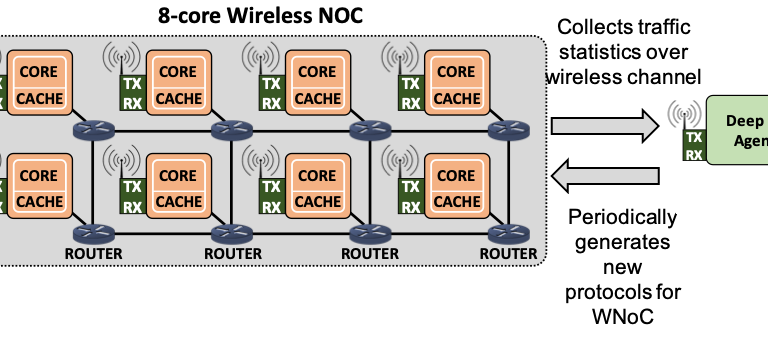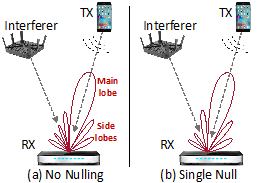Radical – Bootstrapping Autonomous Radars with Self-Supervised Learning Accepted to CVPR’24
Congratulations, Yiduo, Sohrab, and the team!
Towards Practical and Scalable Molecular Networks [SIGCOMM’23]
Molecular networks have the potential to enable bio-implants and biological nano-machines to communicate inside the human body. Molecular networks send and receive data between nodes by releasing molecules into the bloodstream. In this work, we explore how we can scale molecular networks from a single transmitter single receiver paradigm to multiple transmitters that can concurrently (…)
Contactless Material Identification with Millimeter Wave Vibrometry [MobiSys’23]
This paper introduces RFVibe, a system that enables contactless material and object identification through the fusion of millimeter wave wireless signals with acoustic signals. In particular, RFVibe plays an audio sound next to the object that generates micro-vibrations in the object. These micro-vibrations can be captured by shining a millimeter wave radar signal on the (…)
WINC: A Wireless IoT Network for Multi-Noise Source Cancellation [IPSN’23]
This paper introduces Wireless IoT-based Noise Cancellation (WINC) which defines a framework for leveraging a wireless network of IoT microphones to enhance active noise cancellation in noise-canceling headphones. The IoT microphones forward ambient noise to the headphone over the wireless link which travels a million times faster than sound and gives the headphone a future (…)
Exploiting Virtual Array Diversity for Accurate Radar Detection [ICASSP’23]
Using millimeter-wave radars as a perception sensor provides self-driving cars with robust sensing capability in adverse weather. However, mmWave radars currently lack sufficient spatial resolution for semantic scene understanding. This paper introduces Radatron++, a system leverages cascaded MIMO (Multiple-Input Multiple-Output) radar to achieve accurate vehicle detection for self-driving cars. We develop a novel hybrid radar (…)
Radatron: Accurate Detection Using Multi-Resolution Cascaded MIMO Radar [ECCV’22]
Millimeter wave (mmWave) radars are becoming a more popular sensing modality in self-driving cars due to their favorable characteristics in adverse weather. Yet, they currently lack sufficient spatial resolution for semantic scene understanding. In this paper, we present Radatron, a system capable of accurate object detection using mmWave radar as a stand-alone sensor. To enable (…)
Enabling IoT Self-Localization Using Ambient 5G Signals [NSDI’22]
This paper presents ISLA, a system that enables low-power IoT nodes to self-localize using ambient 5G signals without any coordination with the base stations. ISLA operates by simply overhearing transmitted 5G packets and leverages the large bandwidth used in 5G to compute the high-resolution time of flight of the signals. Capturing large 5G bandwidth consumes a (…)

One Protocol to Rule Them All: Deep Reinforcement Learning for Wireless Network-on-Chip [NSDI’21]
Wireless Network-on-Chip (NoC) has emerged as a promising solution to scale chip multi-core processors to hundreds and thousands of cores. The broadcast nature of a wireless network allows it to significantly reduce the latency and overhead of many-to-many multicast and broadcast communication on NoC processors. Unfortunately, the traffic patterns on wireless NoCs tend to be (…)

Practical Null Steering in Millimeter Wave Networks [NSDI’21]
Millimeter wave (mmWave) is playing a central role in pushing the performance and scalability of wireless networks by offering huge bandwidth and extremely high data rates. Millimeter wave radios use phased array technology to modify the antenna beam pattern and focus their power towards the transmitter or receiver. In this paper, we explore the practicality (…)
Efficient Wideband Spectrum Sensing Using MEMS Acoustic Resonators [NSDI’21]
This paper presents S3, an efficient wideband spectrum sensing system that can detect the real-time occupancy of bands in large spectrum. S3 samples the wireless spectrum below the Nyquist rate using cheap, commodity, low power analog-to-digital converters (ADCs). In contrast to existing sub-Nyquist sampling techniques, which can only work for sparsely occupied spectrum, S3 can (…)